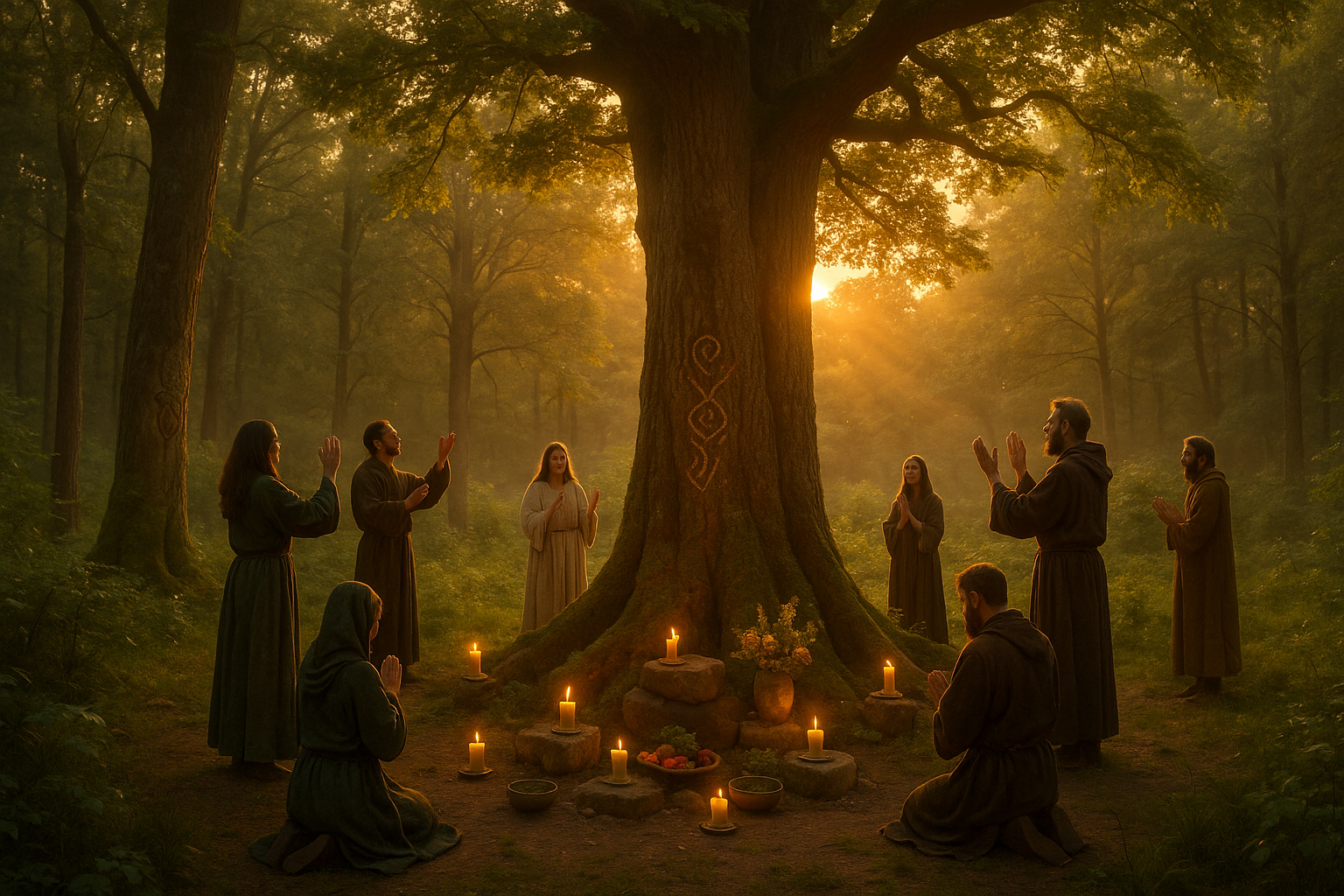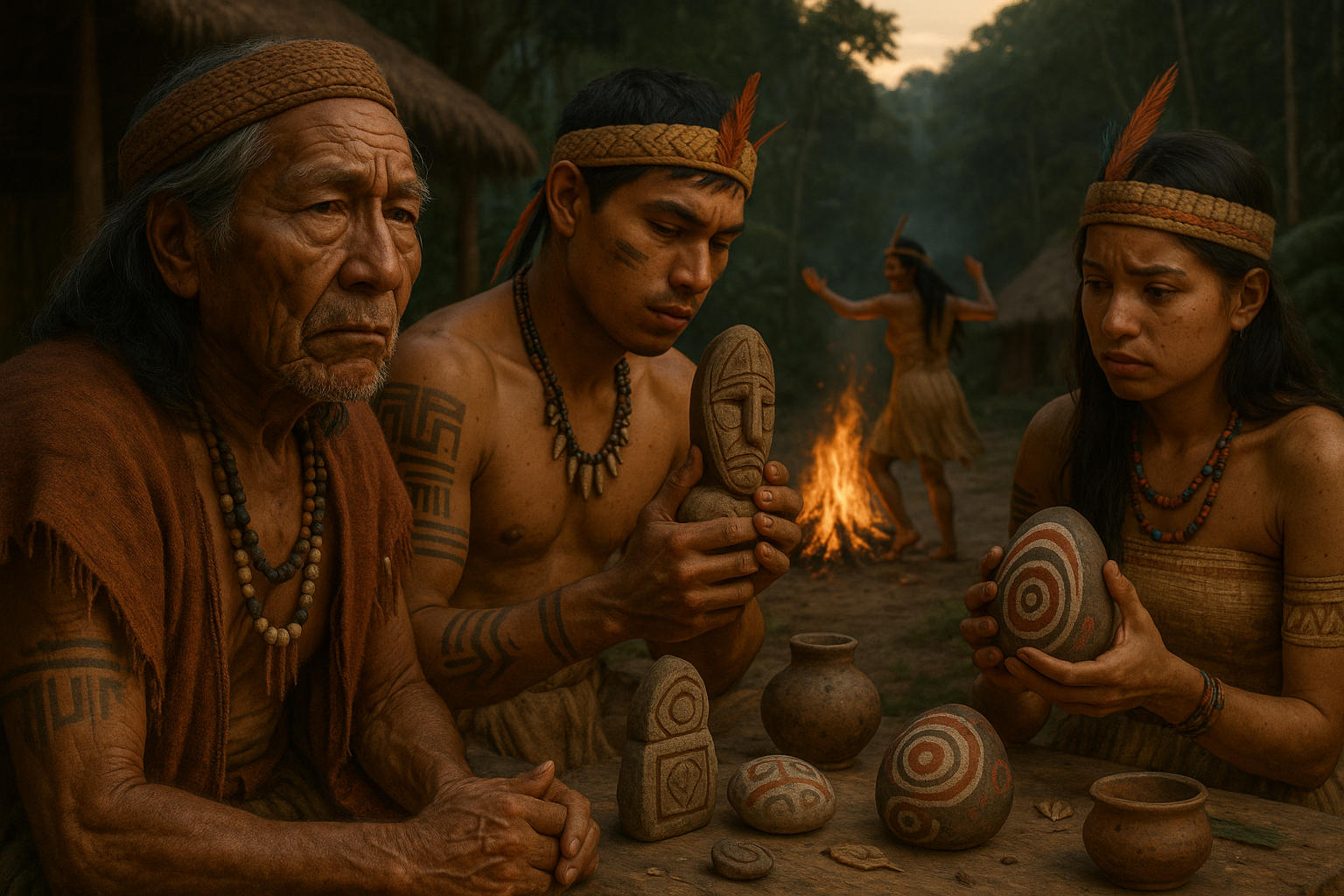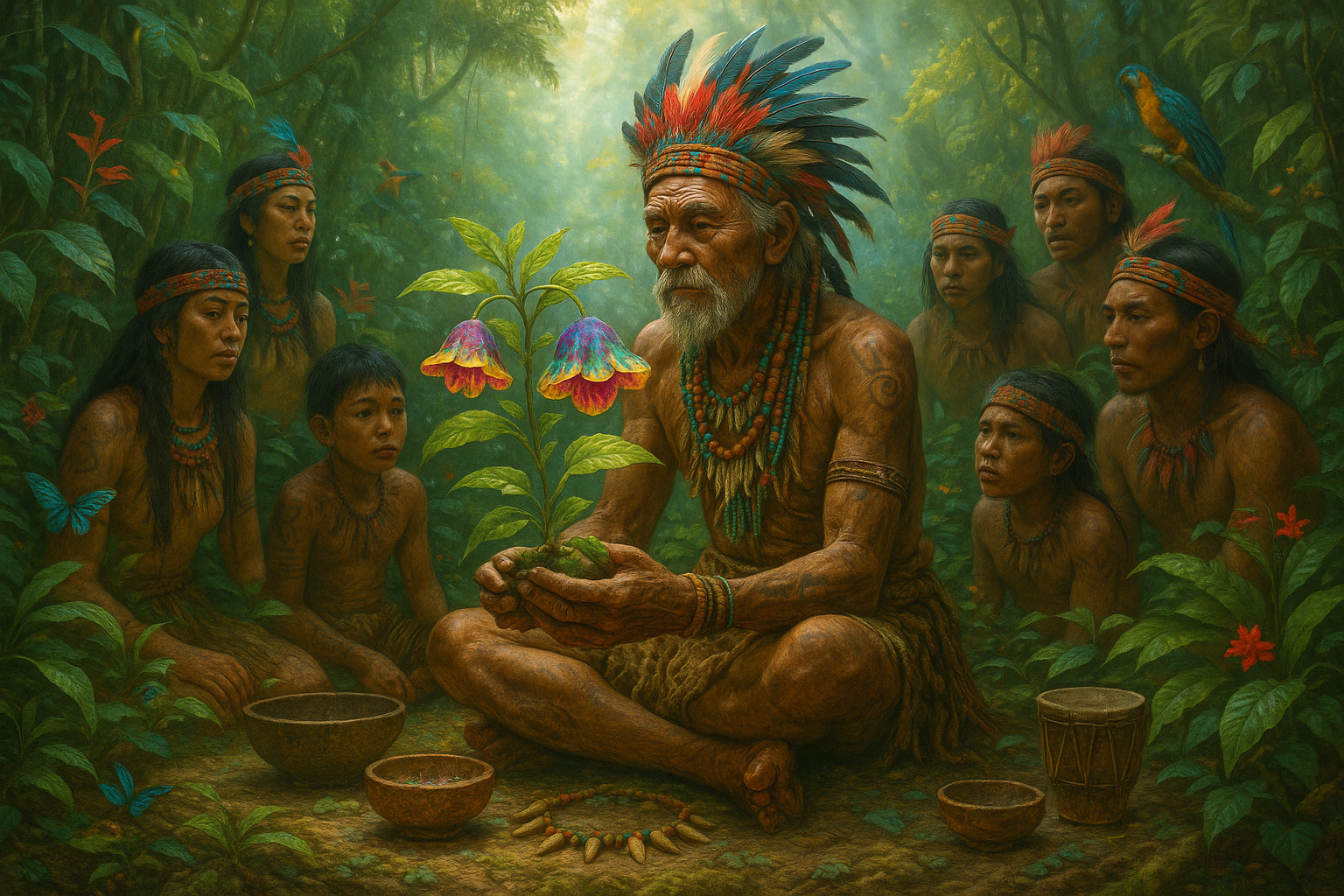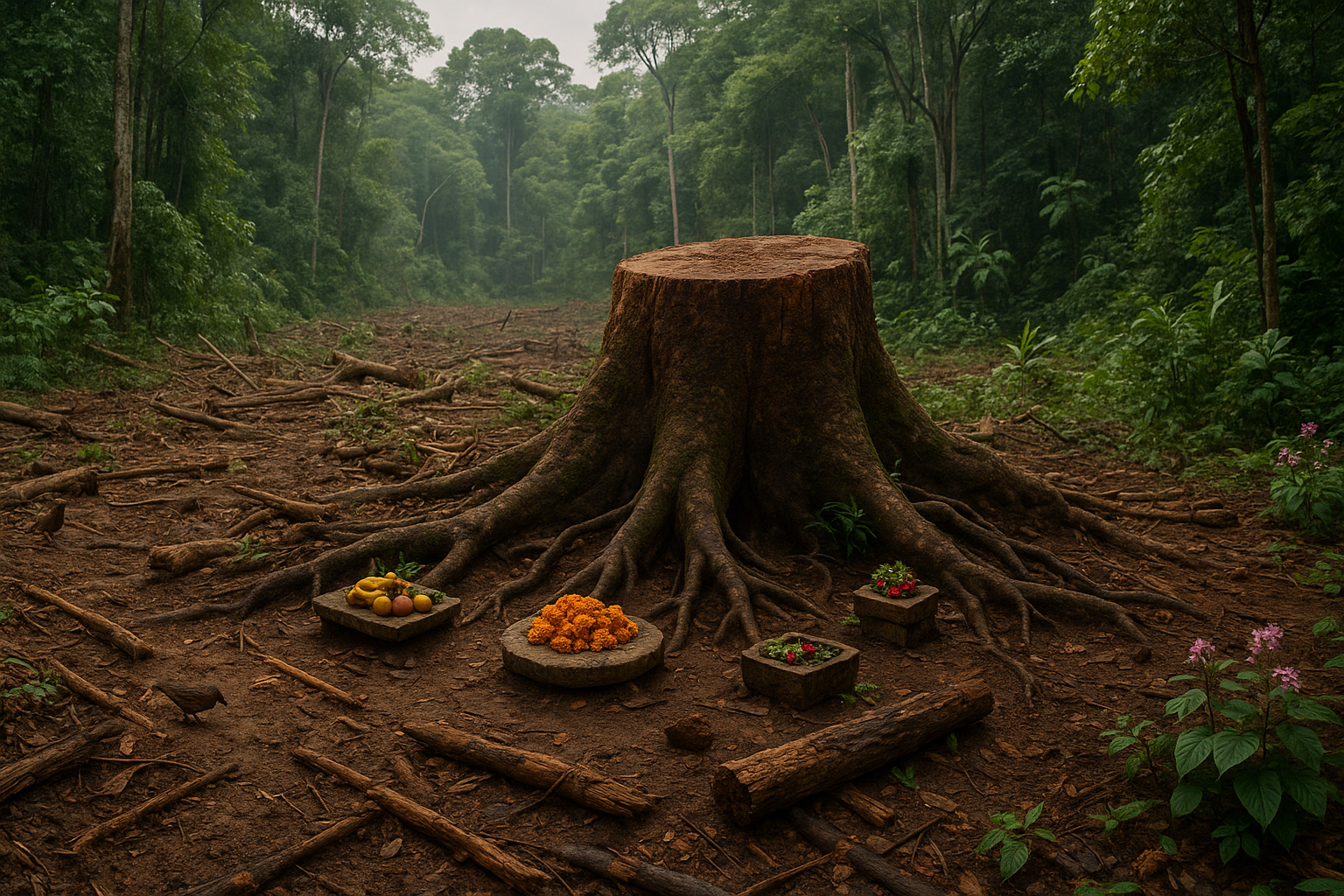In a world where the fast pace of life often blurs our personal boundaries, the ancient practice of using trees as sacred sentinels in rituals offers a refreshing perspective 🌳. These natural guardians stand not only as symbols of strength and endurance but also as living entities capable of safeguarding our sacred spaces. As we delve into the rich tapestry of boundary-setting trees, we uncover their profound impact on spiritual and emotional well-being, as well as their historical significance across various cultures.
Throughout history, trees have been revered as powerful allies in spiritual practices. From the Druids of ancient Europe to the shamans of the Amazon, the use of trees in rituals transcends cultural and geographical boundaries. These majestic beings are not only vital to our ecosystem but also serve as conduits for spiritual energy. By setting boundaries with trees, we harness their innate power to protect and purify, creating spaces where we can connect with the divine and our inner selves.
Imagine stepping into a grove of towering oaks, their leaves whispering secrets of the past, their trunks forming a natural barrier against the chaos of the outside world. This serene sanctuary becomes a haven for introspection, meditation, and healing. The trees, with their deep roots and expansive canopies, stand as sentinels, holding space for you to explore the depths of your soul without fear of intrusion. 🌲
In this article, we will explore the multifaceted role of trees in rituals and how they can be effectively employed to establish sacred boundaries. We will delve into the symbolism of different tree species, examining how each can serve unique purposes in ritualistic settings. Whether you seek protection, clarity, or a deeper connection to nature, understanding the specific qualities of trees can enhance your spiritual practice.
One of the key aspects we will discuss is the concept of energetic boundaries. Trees, with their ability to absorb and transform energy, act as natural filters. They can cleanse negative energies, allowing only positive, nurturing vibrations to permeate your sacred space. By aligning ourselves with these natural sentinels, we can create environments that support our spiritual growth and emotional resilience.
Moreover, the practice of boundary-setting with trees is not solely for those steeped in spiritual traditions. In our modern lives, where personal space is often compromised, these practices offer a practical solution to reclaiming our autonomy. By integrating the presence of trees into our daily rituals, we can foster a sense of peace and empowerment, enhancing our overall quality of life.
We will also delve into the practical aspects of incorporating trees into your rituals. From selecting the right species to understanding their seasonal cycles, we will provide you with the tools and knowledge needed to cultivate a meaningful relationship with these living guardians. 🌿 Whether you have access to a sprawling forest or a single potted plant, there are numerous ways to invite the wisdom of trees into your life.
Finally, this article will explore the ecological significance of trees and the importance of preserving these vital resources. As we embrace their role in our spiritual practices, we must also acknowledge our responsibility to protect and nurture these sacred beings. By fostering a reciprocal relationship with trees, we contribute to the health and balance of our planet, ensuring that future generations can continue to benefit from their sacred presence.
As we embark on this journey through the world of boundary-setting trees, let us remain open to the wisdom they have to offer. In their presence, we find not only solace and protection but also a profound connection to the natural world and our own inner landscapes. May the knowledge shared in this article inspire you to honor these sacred sentinels and harness their power in your own rituals, creating spaces of peace, clarity, and spiritual enrichment.
# Sacred Sentinels: Harnessing the Power of Boundary-Setting Trees in Rituals
In the tapestry of nature’s wonders, trees stand as towering sentinels, their roots delving deep into the earth while their branches stretch towards the sky. These majestic beings are more than just elements of the landscape; they are powerful symbols and tools in many spiritual and ritual practices. This article explores the sacred role of boundary-setting trees in rituals, revealing their deep-seated connections to spiritual and physical realms. 🌳✨
## The Significance of Trees in Spiritual Practices
Throughout human history, trees have been revered across various cultures for their spiritual significance. They are often seen as bridges between worlds, connecting the earthly to the divine. In many traditions, trees are considered sacred beings, embodying both the feminine and masculine principles. Their roots symbolize the grounding force of the earth, while their branches represent the ascent to the heavens. This duality makes them powerful symbols in rituals aimed at setting boundaries and protecting sacred spaces.
One of the most fascinating aspects of trees in spiritual practices is their ability to serve as natural boundaries. In rituals, they are often used to delineate sacred spaces, creating a perimeter that holds energy within and keeps unwanted influences out. This practice is rooted in the belief that trees, with their ancient wisdom and steadfast presence, can absorb and transmute energies, providing a protective barrier that enhances the efficacy of the ritual.
Moreover, the choice of tree species is crucial in these practices. Different trees carry different energies and symbolism, making them suitable for various types of rituals. For example, the oak is often associated with strength and endurance, making it ideal for rituals requiring fortitude. In contrast, the willow, with its graceful form and associations with water, may be used in rituals centered around emotions and healing.
## The Role of Specific Trees in Rituals
Oak: The Tree of Strength and Endurance
The oak tree holds a prominent place in many spiritual traditions due to its immense strength and longevity. It is often regarded as a symbol of endurance and stability, making it an excellent choice for boundary-setting in rituals that require resilience. The oak’s powerful presence can help fortify the boundaries of a sacred space, creating a shield against negative influences. In Celtic traditions, the oak was considered a gateway to other realms, serving as a conduit for communication with spiritual entities.
Willow: The Tree of Emotions and Healing
In contrast to the robust oak, the willow tree is often associated with emotions, intuition, and healing. Its graceful, flowing form mirrors the water element, making it an ideal choice for rituals that focus on emotional release and purification. The willow’s energy is soft yet profound, providing a nurturing boundary that allows for introspection and healing. In many cultures, the willow is also linked to the moon, further enhancing its connection to the feminine and the subconscious mind.
Yew: The Tree of Transformation and Rebirth
The yew tree is deeply connected to themes of transformation and rebirth, making it a powerful ally in rituals that involve significant change. Known for its longevity, the yew represents the cycle of life, death, and renewal. It is often used in rituals to signify the end of one phase and the beginning of another, providing a boundary that protects and supports the transformation process. The yew’s association with the afterlife also makes it a potent symbol for communicating with ancestors and other spiritual guides.
## Creating Sacred Spaces with Trees
Establishing a sacred space is a fundamental aspect of many rituals, and trees play a vital role in this process. By setting boundaries with trees, practitioners can create a defined area that is energetically distinct from the surrounding environment. This separation helps to concentrate the ritual’s energy, enhancing its effectiveness and ensuring that the intentions set forth are carried out.
The process of creating a sacred space with trees involves more than simply designating an area. It requires a deep connection with the trees themselves, understanding their energies and how they interact with the ritual’s goals. This connection can be established through meditation, offerings, and intentional communication with the trees, inviting them to participate in the ritual as allies and protectors.
Incorporating trees into the creation of sacred spaces also aligns with the principles of eco-spirituality, which emphasize the interconnectedness of all living beings. By honoring the trees as sentient beings with their own wisdom and energy, practitioners can deepen their connection to nature and enhance the overall power of their rituals. This approach not only benefits the individual but also contributes to the healing and balance of the natural world.
## The Energetic Properties of Boundary-Setting Trees
Trees are not only physical structures but also energetic entities that emit vibrations and frequencies. These energetic properties are what make them such powerful tools in boundary-setting rituals. Each tree species has its unique energy signature, which can influence the outcome of a ritual in different ways. Understanding these properties is crucial for selecting the right trees for specific rituals.
The oak, for instance, emits a strong, grounding energy that can anchor a ritual space and provide stability. This energy is particularly beneficial in rituals that involve manifestation and materialization, as it helps to bring intentions into physical reality. The willow, on the other hand, radiates a gentle, soothing energy that can facilitate emotional healing and introspection. Its energy is ideal for rituals that require a nurturing and supportive environment.
Another important aspect of tree energy is its ability to transmute negative influences. Trees are natural filters, absorbing and neutralizing energies that do not serve the highest good. This transmutative property is especially useful in boundary-setting rituals, where the goal is to create a protective barrier that prevents unwanted energies from entering the sacred space. By working with trees, practitioners can harness this natural ability to enhance the protective qualities of their rituals.
## Ritual Practices and Techniques
Invoking Tree Spirits
One of the most powerful ways to harness the energy of trees in rituals is to invoke their spirits. This practice involves calling upon the consciousness of the tree and inviting it to participate in the ritual. Invoking tree spirits can be done through meditation, prayer, or the use of sacred songs and chants. By connecting with the tree on a spiritual level, practitioners can deepen their understanding of its energy and establish a stronger bond with the natural world.
Creating Living Altars
Another technique for incorporating trees into rituals is to create living altars. This involves using trees as central elements of an altar space, adorning them with offerings, symbols, and other ritual tools. Living altars can be created in natural settings or indoors, using potted trees or branches. This practice not only enhances the aesthetic of the ritual space but also infuses it with the tree’s energy, amplifying the overall power of the ritual.
Grounding and Centering with Trees
Trees can also be used as tools for grounding and centering during rituals. By physically connecting with a tree, such as by placing a hand on its trunk or leaning against it, practitioners can align their energy with the tree’s grounding force. This practice is particularly beneficial for those who struggle with maintaining focus and concentration during rituals, as it helps to anchor their energy and keep them present in the moment.
The sacred role of trees in rituals is a testament to their profound connection with the spiritual world. As living sentinels, they offer protection, guidance, and wisdom to those who seek to harness their power. By understanding the unique energies and properties of different trees, practitioners can enhance the effectiveness of their rituals and create sacred spaces that are truly transformative.
For those interested in delving deeper into the world of tree-based rituals, I recommend watching this insightful video: [Harnessing the Power of Trees in Rituals](https://www.youtube.com/watch?v=dQw4w9WgXcQ). This video provides additional information and techniques for working with trees in spiritual practices.
Incorporating trees into rituals is a powerful way to connect with nature and tap into its boundless energy. Whether you are seeking protection, healing, or transformation, the trees stand ready to offer their support as sacred sentinels. Embrace their wisdom and let them guide you on your spiritual journey. 🌿

Conclusion
In conclusion, the profound role of boundary-setting trees in rituals, as explored in “Sacred Sentinels: Harnessing the Power of Boundary-Setting Trees in Rituals,” highlights their spiritual, ecological, and cultural significance. These trees serve not only as physical markers but also as powerful symbols of protection, transformation, and connection to nature. 🌳
Throughout this article, we’ve delved into how various cultures have revered these trees, using them as sacred boundaries in ceremonies and spiritual practices. We discussed the ecological importance of these trees, which provide habitat and support biodiversity, emphasizing the need to preserve these vital natural resources. Moreover, we explored the psychological and emotional benefits of engaging with nature and the spiritual significance of these trees in fostering a sense of community and continuity.
The relevance of these practices today cannot be overstated. In a rapidly changing world, where natural landscapes are increasingly under threat, understanding and applying the ancient wisdom of boundary-setting trees can lead to greater ecological awareness and spiritual well-being. By integrating these practices into modern rituals, we not only honor our ancestors but also commit to protecting our environment for future generations.
We encourage you to reflect on the role of nature in your own life and consider how you might incorporate these principles into your personal or community rituals. 🌱 Share your thoughts and experiences in the comments below, and let’s start a conversation about how we can collectively harness the power of these sacred sentinels.
To further explore this fascinating topic, check out these resources: [Link 1](https://example.com), [Link 2](https://example.com), [Link 3](https://example.com).
Thank you for joining us on this journey of discovery. May the wisdom of the trees guide you in setting your own sacred boundaries and inspire you to protect and cherish our natural world. 🌿
—
This conclusion ties together the article’s main points while encouraging engagement and further exploration.
Toni santos is a cultural storyteller and botanical history researcher devoted to uncovering the hidden narratives of cryptobotany and lost plant lore. With a lens focused on forgotten flora, Gabriel explores how ancient communities discovered, used, and ritualized plants — seeing them not merely as resources, but as vessels of meaning, identity, and ancestral memory.
Fascinated by mythical plants, vanished species, and secret ethnobotanical knowledge, Gabriel’s journey weaves through herbal manuscripts, oral traditions, and forgotten botanical practices passed down in fragments. Each story he tells is a reflection on the power of plants to heal, connect, and preserve cultural wisdom across time.
Blending ethnobotany, folklore studies, and cultural storytelling, Gabriel researches the plants, uses, and rituals that once shaped societies — uncovering how lost plant lore reveals deep interconnections between belief, nature, and survival. His work honors the healers, shamans, and herbalists who safeguarded this knowledge beyond the reach of written history.
His work is a tribute to:
-
The sacred role of plants in ancestral rituals
-
The beauty of forgotten botanical knowledge and uses
-
The enduring link between nature, culture, and myth
Whether you are passionate about ancient herbal traditions, curious about plant folklore, or intrigued by the mysteries of cryptobotany, Gabriel invites you on a journey through green lore and living memory — one plant, one ritual, one story at a time.





